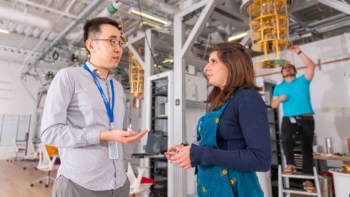What follows is the beginning of a quantum romance. Alice and Bob meet in a bar. After some pleasant conversation, Bob asks for Alice’s phone number so that he can call her sometime. But Alice is not quite sure about Bob and decides to leave their future to chance by flipping a coin in private. If the coin is heads she will give Bob her phone number, but if it is tails she will give him a completely random number. The coin does not land kindly for Bob and Alice gives him a random number.
The next morning Alice changes her mind and decides that, after all, she would like Bob to phone her. But how can he phone if Alice did not give him the right number? Luckily Alice was thinking ahead the night before and made sure that she got Bob’s number in case she changed her mind. So Alice calls Bob, but his voice-mail is switched on so she has to leave a message. The only problem is that Bob exchanged a lot of phone numbers the night before and there is only space for Alice to squeeze one bit of information – a one or a zero – onto his answering machine.
Fortunately Alice had anticipated this possibility when she met Bob. So instead of just giving him a classical random number, she had in fact given him a special quantum state at the bar. And with the one extra bit of information that Alice leaves on his answer machine, Bob can work out her number and call her, which he does.
Find out how Alice managed to convey her full phone number to Bob by only giving him one bit of information, in the May issue of Physics World. The article is written by David DiVincenzo and Barbara Terhal who are at the IBM Watson Research Center in New York and the Institute for Quantum Information at the California Institute of Technology.



